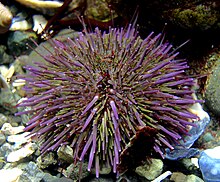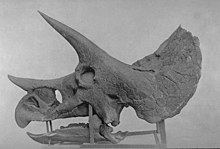Armour (zoology)

Armour or armor in
Composition
Armoured structures are usually composed of hardened mineral deposits, chitin, bone, or keratin.
Species with armour

Armour is evident in numerous animal species from both current and prehistoric times.

In modern times, some
.Numerous mammals employ the use of spines and body armour, although not as sturdy as reptilian armour, like the spines of the echidnas and of porcupines and hedgehogs. The bony shell of the armadillos and the extinct Glyptodon were very much like Ankylosaurus' armour and some modern armadillos curl up into a ball when threatened, making them unexposed due to their armour. Similarly, the hairy plate-like scales of the pangolin are employed in the same way and are constructed of the same material used in the offensive armour, the horn, of the rhinoceros.
Usage
Armour, although all used for the sole intent to ward off attackers, can be split into defensive and offensive armour. Examples of offensive armour are
